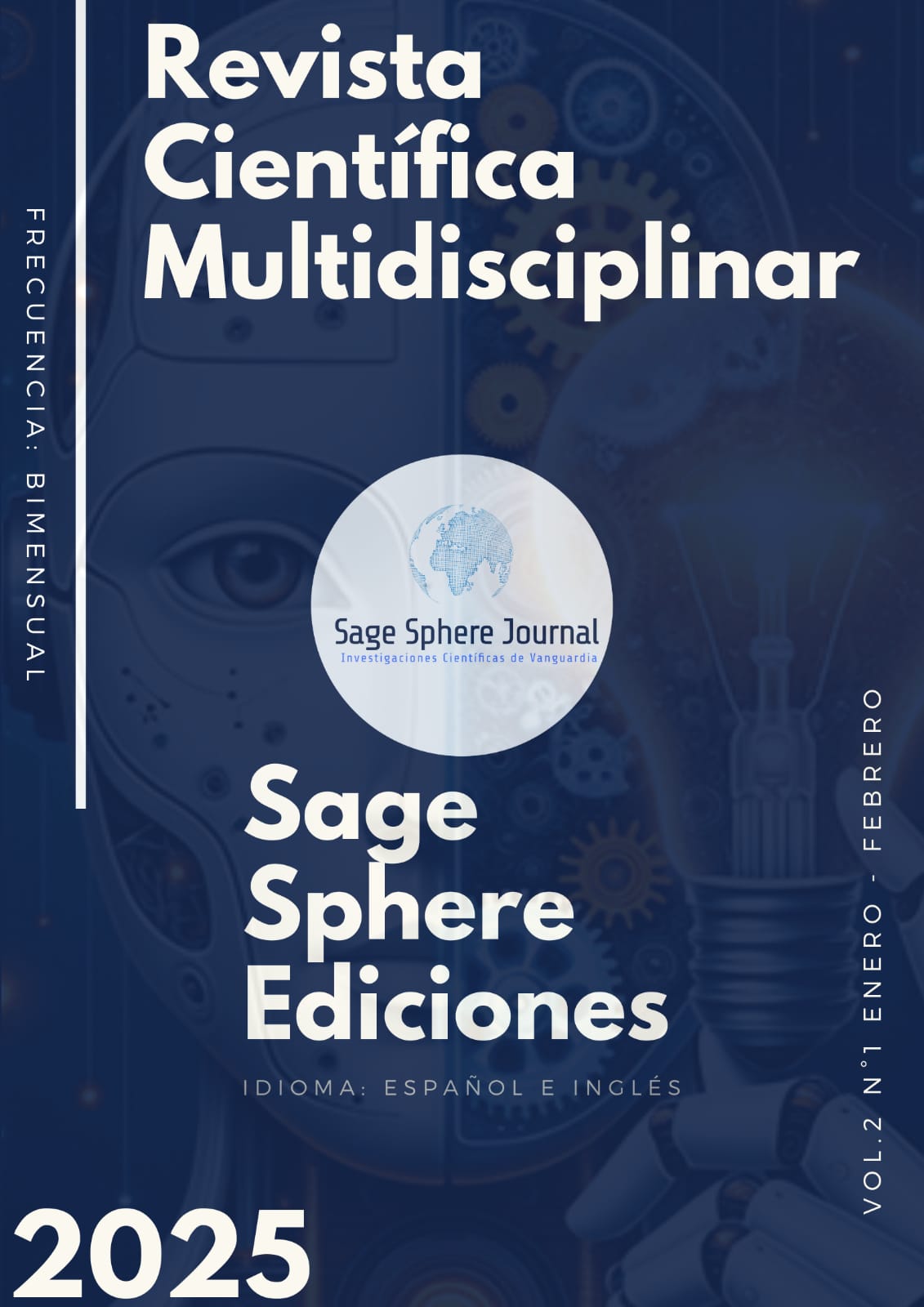The transformation of mathematics learning through tic
DOI:
https://doi.org/10.63688/qkmqjg31Keywords:
Mathematics, learning, simulations, digital resourcesAbstract
The present research aims to analyze how lipid oxidation is modeled and evaluated in vegetable oils rich in unsaturated fatty acids. The review explores the mathematical models used (such as Arrhenius or neural networks) and key kinetic parameters (reaction rate, activation energy). In addition, it highlights their relevance in predicting stability and optimizing industrial processes, focusing on trends such as natural antioxidants and advanced simulations to improve shelf life and oil quality. The article will review the literature on oxidation processes in oils obtained from dried seeds, highlighting their impact on stability and quality. It will analyze the main mathematical models used to predict oxidation, such as classical kinetic models (Arrhenius) and advanced approaches, such as computational simulations. In addition, it will address key kinetic parameters, such as rate constant and activation energy, and how factors such as temperature and lipid composition influence them. It will also explore industrial applications and current trends, such as the use of natural antioxidants. will provide a comprehensive analysis of the mathematical models and kinetic parameters related to the oxidation of oils from dried seeds. This process is fundamental to understanding the oxidative stability and shelf life of these oils, which are essential in the food, cosmetics and pharmaceutical industries. Models such as Arrhenius and other advanced ones will be discussed, as well as factors affecting kinetics, such as temperature and light. The objective is to identify effective methodologies, highlight limitations and explore industrial applications and current trends to improve product preservation and quality
References
ACabrera, J. C., & Guevara-Vizcaíno, C. F. (2023). Realidad virtual para la mejora del rendimiento académico en estudiantes de educación superior. Revista Metropolitana de Ciencias Aplicadas, 6(S2), 233-243. https://doi.org/10.62452/xr07j373
Ayala Pezzutti, Rocío Janett, Laurente Cárdenas, Carlos Miguel, Escuza Mesías, César Daniel, Núñez Lira, Luis Alberto, & Díaz Dumont, Jorge Rafael. (2020). Representaciones, 8(1), e430. https://dx.doi.org/10.20511/pyr2020.v8n1.430
Barbosa, A., Narciso, R., rodríguez, I., Mochnacz, I., Martins, I., Conceicao, J., Machado, J., Klauch, J., Medeiros, K., Araujo, P.(2024). https://rgsa.openaccesspublications.org/rgsa/article/view/6373
Realidad virtual en la educación superior, Rey Roque, A. (2023). Proceso de enseñanza-aprendizaje de la derivada mediado por objetos dinámicos e interactivos elaborados con GeoGebra. Ciencia 23, 1100-10109. Piaget, J., & Vigotsky, L. (2008).
Teorías del aprendizaje. El niño: Desarrollo y Proceso de.LÓPEZ NEIRA, Leonardo Rodrigo. Indagación en la relación aprendizaje-tecnologías digitales . En: Educación y educadores, 2017, vol. 20, no. 1, p. 91 -105. Disponible en http://educacionyeducadores.unisabana.edu.co/index.php/eye/article/view/6374.
VEGA VEGA, Juan Carlos; NIÑO DUARTE, Franklin; CÁRDENA, Yini Paola. Enseñanza de las matemáticas básicas en http://www.scielo.org.co/scielo.php?script=sci_arttext&pid=S0120-81602015000200011.
Cenas, F.; Blaz, F.; Gamboa, L. y Castro, W. (2021). Geogebra: herramienta tecnológica para el aprendizaje significativo de las matemáticas en universitarios. Horizontes. Revista de Investigación en Ciencias de la Educación, 5(18), 382-390. http://www.scielo.org.bo/pdf/hrce/v5n18/26167964-hrce-5-18-382.pdf
Jiménez, J. y Jiménez, S. (2017). GeoGebra, una propuesta para innovar el proceso enseñanza-aprendizaje en matemáticas. Revista Electrónica sobre Tecnología, Educación y Sociedad, 4(7). https://www.ctes.org.mx/index.php/ctes/article/download/654/736/2631
Navarro, V.; Arrieta, X. y Delgado, M. (2017). Programación didáctica utilizando geogebra para el desarrollo de competencias en la formación de conceptos de oscilaciones y ondas. Omnia , 23(2), 76-88. https://www.redalyc.org/pdf/737/73754834008.pdf
Carrillo-Antolinez, Y., & Rosas-Rivera, R. (2023). Implementación de Estrategias Didácticas Fundamentadas en el uso de las tic Para el Fortalecimiento de la Lectura en los Estudiantes. https://repositorio.udes.edu.co/handle/001/10523
Gutiérrez-Pallares, E., Ramírez-Sánchez, M. Y., & Borges-Gouveia, L. M. (2020). http://dspace.unach.edu.ec/handle/51000/7148
Zazueta López, D. E., Morales Avila, M. C., Romero Rubio, S. A., & Zazueta López, J. E. (2024). https://www.researchgate.net/publication/381514406
Sanjuán Gómez, G., & Gómez Martínez, M. (2018). Tecnologías de la Información y las Comunicaciones: desafío que enfrenta la universidad de ciencias médicas. Edumecentro, 10(1), 168-182.Rivas, J., & Fernández, A. (2015). http://scielo.sld.cu/scielo.php?script=sci_arttext&pid=S2077-28742018000100011
Percepción de los estudiantes sobre las plataformas de aprendizaje Moodle y Blackboard. Enseñanza de las matemáticas y sus aplicaciones.
MEZiatdinov, R., y Valles, JR (2022). Síntesis de modelado, visualización y programación en GeoGebra https://www.ziatdinov-lab.com/manuscripts/synthesis-of-modeling-visualization-and-programming-in-geogebra
A. A., & Doulat, Y. (2022). Students' perceptions of digital tools and their impact on academic performance. Frontiers in Education, 7, 916502. https://www.sciencedirect.com/science/article/abs/pii/S0360131522001622
López-Pérez, M. V., Pérez-López, M. C., & Rodríguez-Ariza, L. . Education and Information Technologieshttps://desarrollodocente.uc.cl/wp-content/uploads/2020/03/1-s2.0-S0360131510003088-main.pdf
Literactiva: Una propuesta de alfabetización informacional y académica mediada por las TIC EDUCAUSE Review. (2020). Moving to Moodle: Reflections Two Years Later. https://er.educause.edu
Coman, C., Țîru, L. G., Meseșan-Schmitz, L., Stanciu, C., & Bularca, M. C. (2020).Online teaching and learning in higher education during the coronavirus pandemic: Students’ perspective. Sustainability, 12(24), 10367. https://doi.org/10.3390/su122410367
Velasquez, S., et al. (2012). Respiratory controller modeling through to Matlab-Simulin k. Universidad, Ciencia y Tecnología, 16(65), 244-248. http://ve.scielo.org/scielo.php
Downloads
Published
Issue
Section
License
Copyright (c) 2025 Diego Fernando Pérez Romero, Johnny Guillermo Calapucha , Andrea Soledad Barbotó Márquez, Luis Alberto Uvidia Armijo (Autor/a)

This work is licensed under a Creative Commons Attribution 4.0 International License.
Los artículos publicados en la revista se distribuyen bajo la licencia Creative Commons Atribución 4.0 Internacional (CC BY 4.0). Esta licencia permite a terceros descargar, copiar, distribuir, adaptar y reutilizar una obra, incluso con fines comerciales, siempre que se otorgue el crédito adecuado al autor original.





